Chih-Lin I
AI-driven 6G Air Interface: Technical Usage Scenarios and Balanced Design Methodology
Mar 16, 2025Abstract:This paper systematically analyzes the typical application scenarios and key technical challenges of AI in 6G air interface transmission, covering important areas such as performance enhancement of single functional modules, joint optimization of multiple functional modules, and low-complexity solutions to complex mathematical problems. Innovatively, a three-dimensional joint optimization design criterion is proposed, which comprehensively considers AI capability, quality, and cost. By maximizing the ratio of multi-scenario communication capability to comprehensive cost, a triangular equilibrium is achieved, effectively addressing the lack of consideration for quality and cost dimensions in existing design criteria. The effectiveness of the proposed method is validated through multiple design examples, and the technical pathways and challenges for air interface AI standardization are thoroughly discussed. This provides significant references for the theoretical research and engineering practice of 6G air interface AI technology.
Pseudo MIMO : An Energy and Spectral Efficient MIMO-OFDM System
Apr 09, 2024



Abstract:This article introduces an energy and spectral efficient multiple-input multiple-output orthogonal frequency division multiplexing (MIMO-OFDM) transmission scheme designed for the future sixth generation (6G) wireless communication networks. The approach involves connecting each receiving radio frequency (RF) chain with multiple antenna elements and conducting sample-level adjustments for receiving beamforming patterns. The proposed system architecture and the dedicated signal processing methods enable the scheme to transmit a bigger number of parallel data streams than the number of receiving RF chains, achieving a spectral efficiency performance close to that of a fully digital (FD) MIMO system with the same number of antenna elements, each equipped with an RF chain. We refer to this system as a ''pseudo MIMO'' system due to its ability to mimic the functionality of additional invisible RF chains. The article begins with introducing the underlying principles of pseudo MIMO and discussing potential hardware architectures for its implementation. We then highlight several advantages of integrating pseudo MIMO into next-generation wireless networks. To demonstrate the superiority of our proposed pseudo MIMO transmission scheme to conventional MIMO systems, simulation results are presented. Additionally, we validate the feasibility of this new scheme by building the first pseudo MIMO prototype. Furthermore, we present some key challenges and outline potential directions for future research.
Statistical QoS Analysis of Reconfigurable Intelligent Surface-assisted D2D Communication
Apr 07, 2022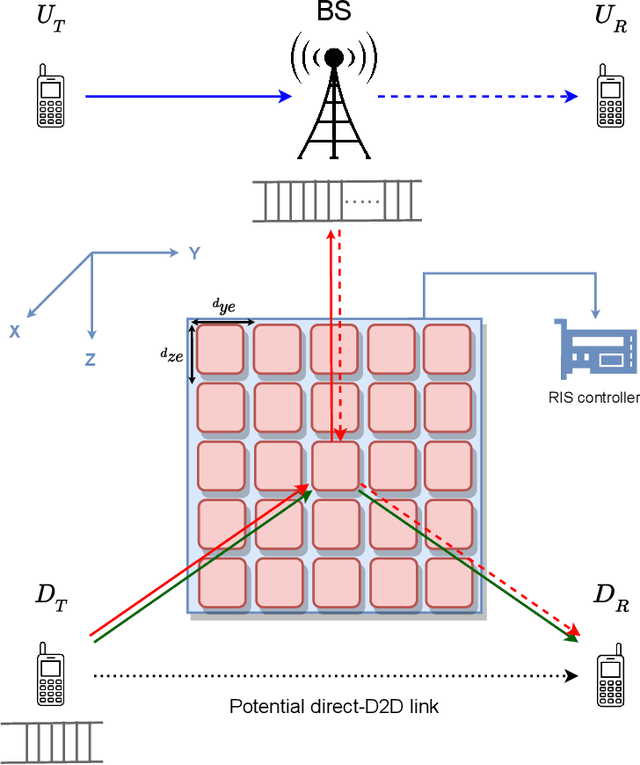
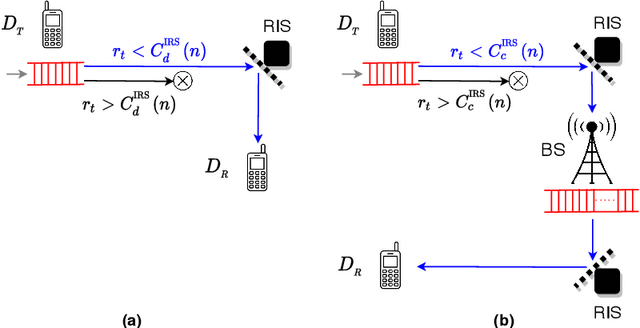
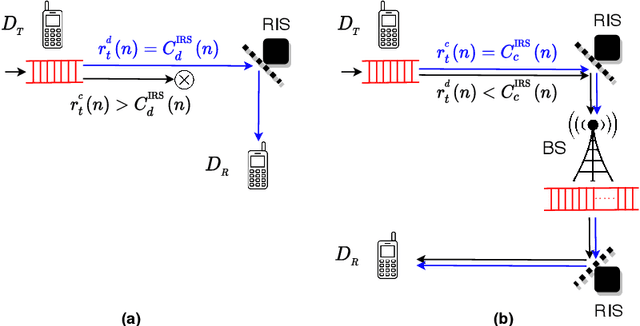
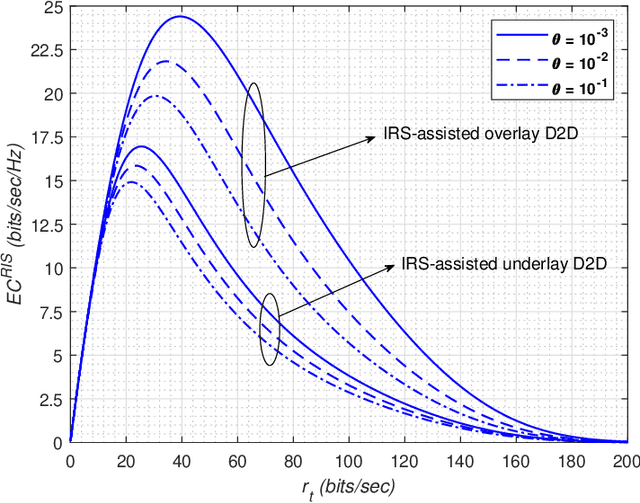
Abstract:This work performs the statistical QoS analysis of a Rician block-fading reconfigurable intelligent surface (RIS)-assisted D2D link in which the transmit node operates under delay QoS constraints. First, we perform mode selection for the D2D link, in which the D2D pair can either communicate directly by relaying data from RISs or through a base station (BS). Next, we provide closed-form expressions for the effective capacity (EC) of the RIS-assisted D2D link. When channel state information at the transmitter (CSIT) is available, the transmit D2D node communicates with the variable rate $r_t(n)$ (adjustable according to the channel conditions); otherwise, it uses a fixed rate $r_t$. It allows us to model the RIS-assisted D2D link as a Markov system in both cases. We also extend our analysis to overlay and underlay D2D settings. To improve the throughput of the RIS-assisted D2D link when CSIT is unknown, we use the HARQ retransmission scheme and provide the EC analysis of the HARQ-enabled RIS-assisted D2D link. Finally, simulation results demonstrate that: i) the EC increases with an increase in RIS elements, ii) the EC decreases when strict QoS constraints are imposed at the transmit node, iii) the EC decreases with an increase in the variance of the path loss estimation error, iv) the EC increases with an increase in the probability of ON states, v) EC increases by using HARQ when CSIT is unknown, and it can reach up to $5\times$ the usual EC (with no HARQ and without CSIT) by using the optimal number of retransmissions.
Generalized Polarization Transform: A Novel Coded Transmission Paradigm
Oct 23, 2021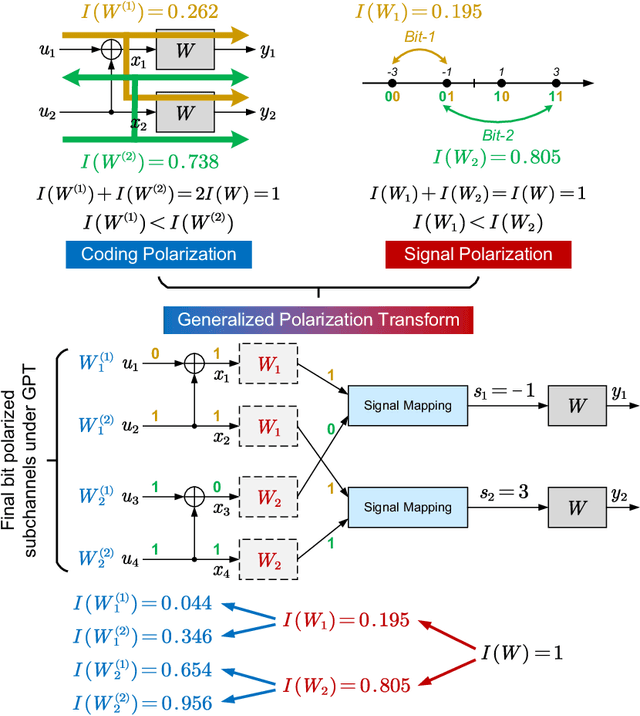
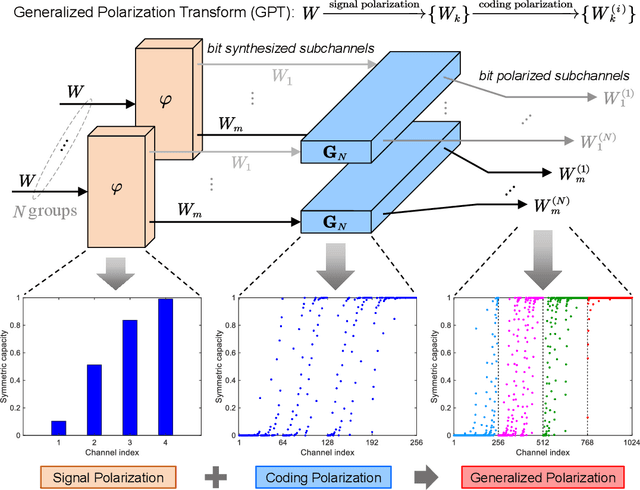
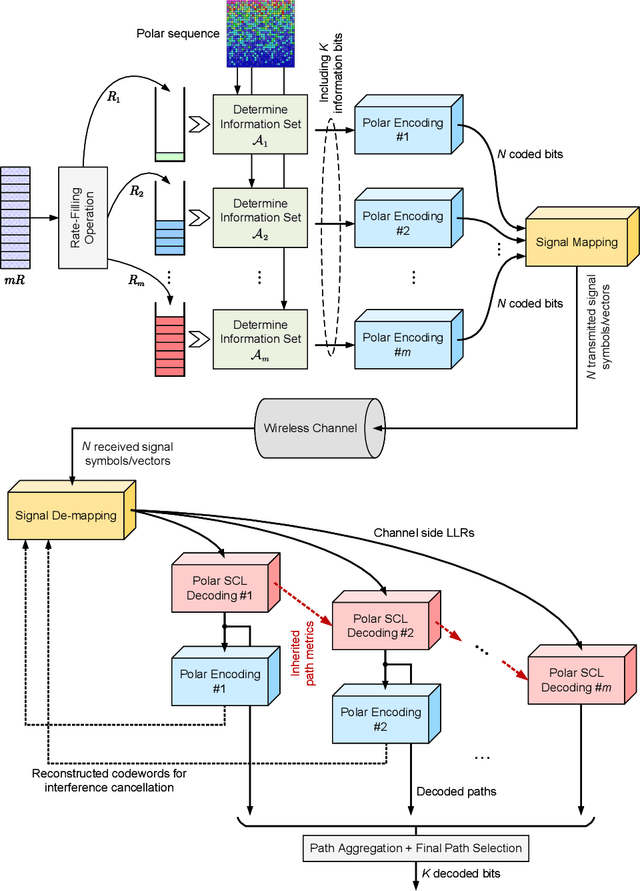
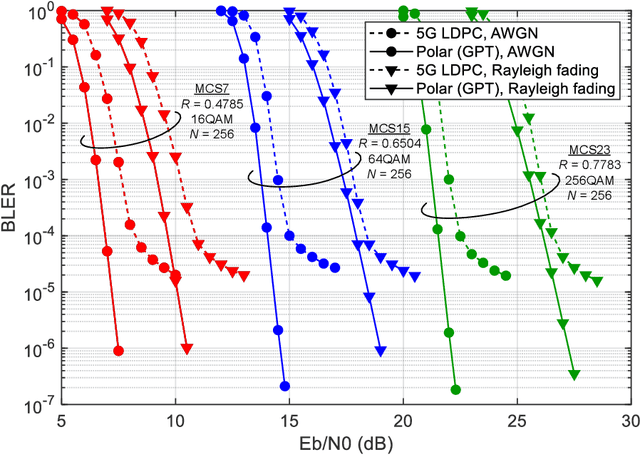
Abstract:With the standardization and deployment of 5G, the focus has now shifted toward developing beyond-5G (B5G) solutions. A new wave of applications and services will demand ultra-high data rates and reliability. To this end, future wireless systems are expected to pave the way for entirely new fundamental air interface technologies to attain a breakthrough in spectrum efficiency (SE). This article discusses a new paradigm, named generalized polarization transform (GPT), to achieve an integrated design of coding, modulation, multi-antenna, multiple access, etc., in a real sense. The GPT enabled air interface develops far-reaching insights that the joint optimization of critical air interface ingredients can achieve remarkable gains on SE compared with the state-of-the-art module-stacking design. We present a comprehensive overview of the application of GPT in various coded transmission systems approaching Shannon limits under short to moderate blocklengths and highlight several promising trends for future research.
 Add to Chrome
Add to Chrome Add to Firefox
Add to Firefox Add to Edge
Add to Edge